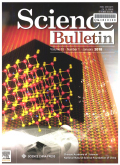- 钛学术文献服务平台 \
- 学术期刊 \
- 基础科学期刊 \
- 自然科学总论期刊 \
- 科学通报(英文版)期刊 \
The thermal management of wearable and stretchable electronics
The thermal management of wearable and stretchable electronics
基本信息来源于合作网站,原文需代理用户跳转至来源网站获取
摘要:
With the rapid development of the era of big data and the Internet of Things technology, the demand for wearable electronics is also increasing.Compared with traditional solid and rigid electronic conductors, flexible/stretchable strain sensors have received widespread attention due to their controllable mechanical properties, light weight and easy integration with the human skin [1-3].However, a large amount of heat is generated in the flexible electronics during the repeated deformation processes.The increased heat will pose a tremendous threat to the safety and reliability of stretchable electronics, and even cause them to fail in structure and become unusable.The introduction of materials with high thermal conductivity is a necessary condition for dissipating heat from the stretchable electronics.It is reported that the temperature in the comfort zone of human skin ranges from 30 to 34 ℃ [4].The increasing temperature caused by heat accumulation may lead to great discomfort and even endanger the safety and health of the human body for wearable electronics that require to be attached to human skin.Therefore, it is necessary to employ materials with good thermal insulation properties.

推荐文章
The use of hydrogeochemical analyses and multivariate statistics for the characterization of thermal
Hydrogeochemistry
Thermal waters
Multivariate statistical analysis
Silica geothermometers
Mixing models
Cold groundwaters
Geochemical assessment, mixing behavior and environmental impact of thermal waters in the Guelma geo
Geochemistry
Geothermometry
Mixing
Thermal effluents
Guelma
Algeria
内容分析
关键词云
关键词热度
相关文献总数
(/次)
(/年)
引文网络
引文网络
二级参考文献 (0)
共引文献 (0)
参考文献 (3)
节点文献
引证文献 (0)
同被引文献 (0)
二级引证文献 (0)
2016(1)
- 参考文献(1)
- 二级参考文献(0)
2018(2)
- 参考文献(2)
- 二级参考文献(0)
2021(0)
- 参考文献(0)
- 二级参考文献(0)
- 引证文献(0)
- 二级引证文献(0)
引文网络交叉学科
相关学者/机构
期刊影响力
科学通报(英文版)
主办单位:
中国科学院
出版周期:
半月刊
ISSN:
1001-6538
CN:
11-1785/N
开本:
大16开
出版地:
北京东黄城根北街16号
邮发代号:
2-177
创刊时间:
1950
语种:
eng
出版文献量(篇)
9507
总下载数(次)
1
总被引数(次)
58070
期刊文献
相关文献
推荐文献
- 期刊分类
- 期刊(年)
- 期刊(期)
- 期刊推荐
力学
化学
地球物理学
地质学
基础科学综合
大学学报
天文学
天文学、地球科学
数学
气象学
海洋学
物理学
生物学
生物科学
自然地理学和测绘学
自然科学总论
自然科学理论与方法
资源科学
非线性科学与系统科学
科学通报(英文版)2022
科学通报(英文版)2021
科学通报(英文版)2020
科学通报(英文版)2019
科学通报(英文版)2018
科学通报(英文版)2017
科学通报(英文版)2016
科学通报(英文版)2015
科学通报(英文版)2013
科学通报(英文版)2012
科学通报(英文版)2011
科学通报(英文版)2010
科学通报(英文版)2009
科学通报(英文版)2008
科学通报(英文版)2007
科学通报(英文版)2006
科学通报(英文版)2005
科学通报(英文版)2004
科学通报(英文版)2003
科学通报(英文版)2002
科学通报(英文版)2001
科学通报(英文版)2000
科学通报(英文版)2021年第9期
科学通报(英文版)2021年第8期
科学通报(英文版)2021年第7期
科学通报(英文版)2021年第6期
科学通报(英文版)2021年第5期
科学通报(英文版)2021年第4期
科学通报(英文版)2021年第3期
科学通报(英文版)2021年第24期
科学通报(英文版)2021年第2期
科学通报(英文版)2021年第18期
科学通报(英文版)2021年第17期
科学通报(英文版)2021年第16期
科学通报(英文版)2021年第15期
科学通报(英文版)2021年第14期
科学通报(英文版)2021年第13期
科学通报(英文版)2021年第12期
科学通报(英文版)2021年第11期
科学通报(英文版)2021年第10期
科学通报(英文版)2021年第1期

 免费查重
免费查重










